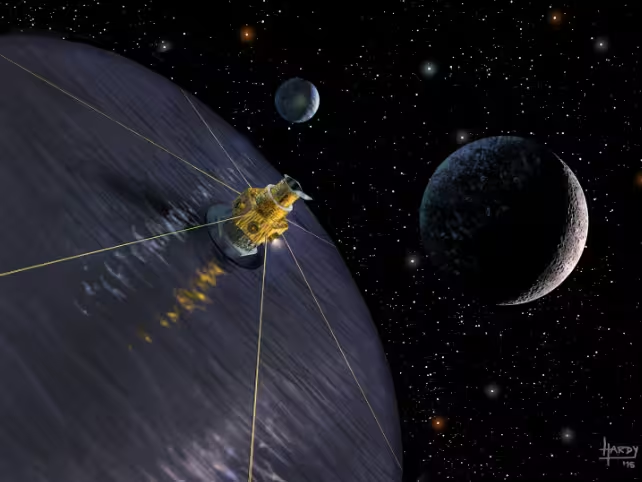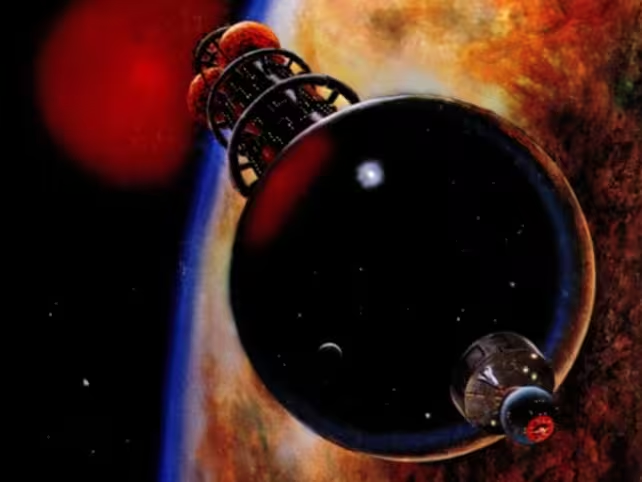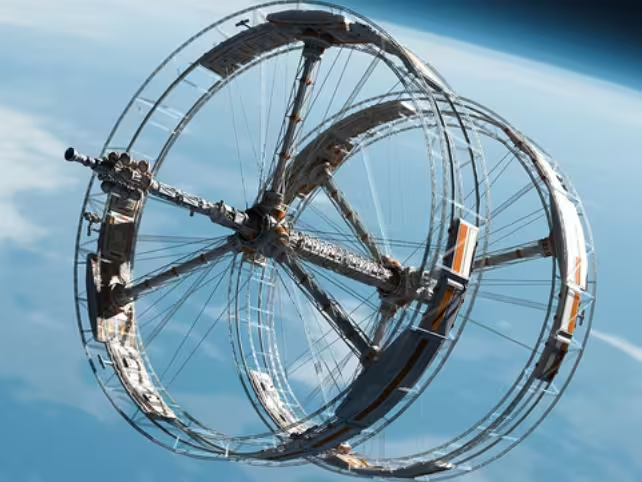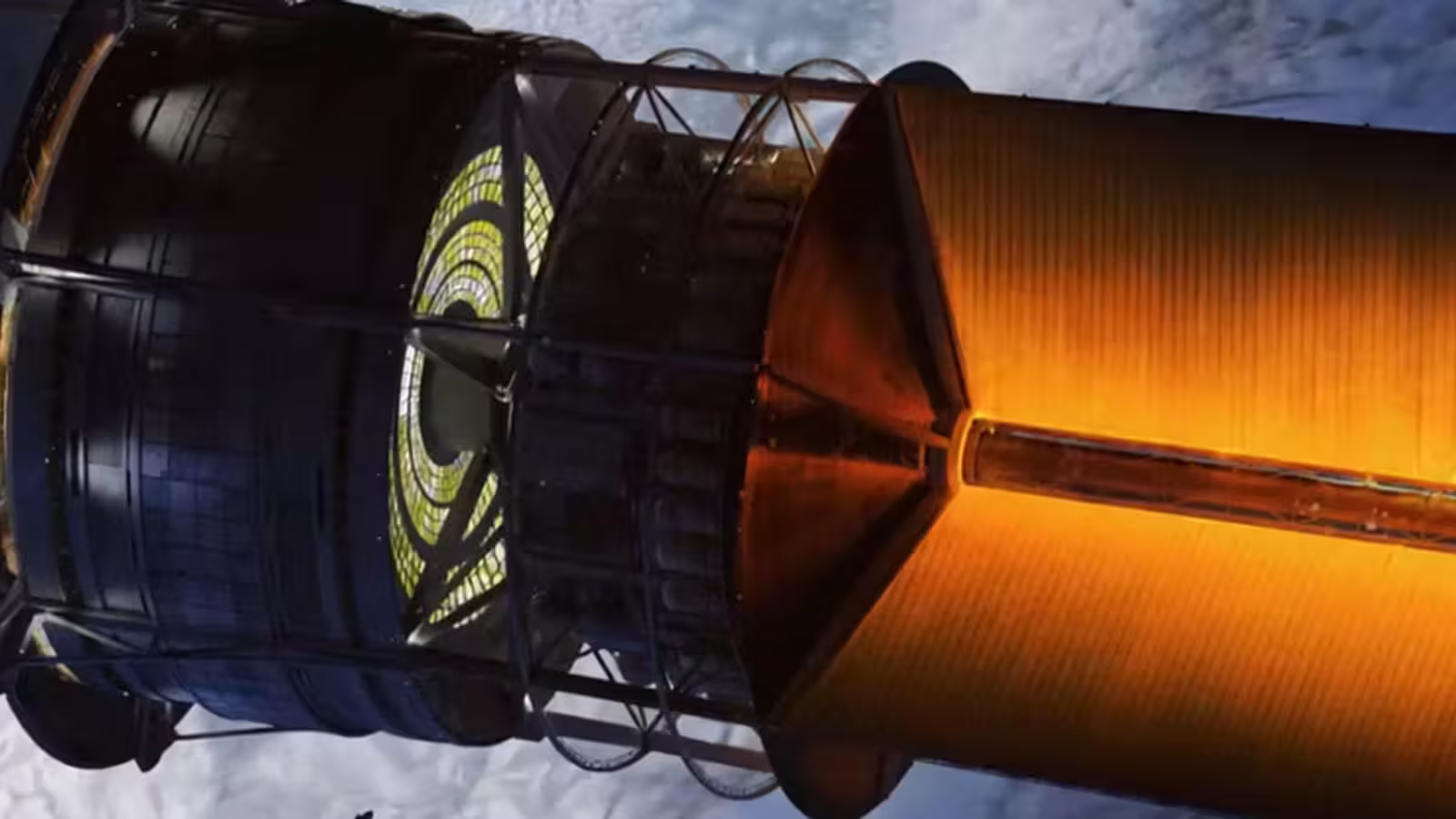10 Minutes
Introduction: The Next Frontier—Designing Generation Ships for Interstellar Travel
As humanity’s curiosity drives us ever further into the cosmos, the concept of interstellar travel—traveling between stars—has shifted from pure science fiction to a legitimate field of research. One of the most thought-provoking challenges is how to send crewed missions on journeys that could last centuries, traversing the vast gulfs of space to reach planets orbiting other stars. In a bold initiative to advance this vision, Project Hyperion, under the Initiative for Interstellar Studies (i4is), launched an international design competition in November 2024. The mission: to develop visionary yet practical concepts for "generation ships" capable of sustaining life on centuries-long voyages to new worlds.
The results, announced in July 2025, showcased exceptional ingenuity from interdisciplinary teams worldwide. This article explores the scientific background, analyzes the competition’s top entries, and delves into what these pioneering concepts reveal about our future among the stars.
The Science and Context: Why Generation Ships?
Why Interstellar Travel Is So Hard
Traveling to another star system represents one of humanity’s greatest scientific and engineering challenges. The sheer distances are staggering; even the nearest star, Alpha Centauri, is over four light-years away. Existing or near-term spacecraft propulsion technologies would require time scales from a millennium to over 80,000 years to make this voyage. Traditional approaches—such as rockets and even nuclear propulsion—fall short due to limits in speed, fuel requirements, and the impossibility of resupply missions across such distances.
Directed-energy propulsion, which involves propelling ultra-light nanospacecraft with powerful laser arrays, is the only currently feasible way to reach another star within a human lifetime. Projects like Breakthrough Starshot aim to accelerate gram-scale spacecraft to a significant fraction of the speed of light, but such missions are uncrewed and carry no human passengers.
Crewed missions capable of enduring journeys of centuries or millennia must become self-sustaining. These missions necessitate the development of generation ships—or "worldships"—autonomous, closed-system habitats capable of supporting multiple generations of humans.

Roots in Science Fiction and Early Research
The idea of generation ships has deep roots, dating back to early-20th-century science fiction and visionary essays. Pioneers such as Robert H. Goddard, Konstantin E. Tsiolkovsky, J. D. Bernal, and later thinkers like Stanislaw Ulam, Freeman Dyson, and Dr. Robert Enzmann laid out blueprints for interstellar journeys based on nuclear propulsion, self-sustaining ecosystems, and long-term habitat design. More recently, studies like Project Daedalus (British Interplanetary Society) and NASA Institute for Advanced Concepts (NIAC) have examined fusion, antimatter, and advanced propulsion methods for star-spanning missions.
Yet all converge on one basic need: sustainable life support across centuries, robust infrastructure for food, air, and water, psychological and cultural continuity, and adaptability to unknown risks.
The Challenge: Project Hyperion’s Generation Ship Competition
Competition Design and Global Participation
Project Hyperion’s design contest, spearheaded by i4is, drew on the expertise of architects, engineers, social scientists, anthropologists, and urban planners, emphasizing the crucial interplay between technical systems and human factors. Teams were tasked with developing generation ship concepts viable with present-day or foreseeable technology—while also envisioning novel solutions that expand the boundaries of what is possible.
Key requirements from the competition brief included:
- Support for a population of 1,000 ± 500 people over several centuries.
- Artificial gravity, achieved via rotation, to maintain human health.
- Robust, closed-loop life support for food, water, waste recycling, and atmospheric regeneration.
- Durable architecture that protects against space hazards such as radiation and micro-meteoroids.
- Mechanisms for cultural preservation, education, and technological continuity.
- The capability of achieving at least 10% of light speed (0.1c), allowing for a plausible voyage to the nearest habitable exoplanet—Proxima Centauri b—within approximately 250 years.

The Hazards of Space and Human Factors
Space is a uniquely hostile environment, with dangers including cosmic radiation, psychological isolation, supply scarcity, and the closed confines of habitat modules. The competition demanded not just technical solutions, but also a profound understanding of community dynamics, intergenerational knowledge transfer, cultural resilience, and adaptability.
Top Three Generation Ship Designs: Innovations and Insights
After rigorous international review, hundreds of submissions were narrowed down to three exceptional winning projects, each offering original visions of how humans might one day journey to the stars.
First Prize: Chrysalis—A Modular Starship for Flexible, Sustainable Living
The Chrysalis team from Italy brought together an architect, economic scientist, astrophysicist, environmental engineer, and psychologist to create a ship that balances structural strength, flexibility, and community resilience. Their innovative modular cylindrical vessel, stretching an astonishing 58 kilometers end-to-end with a 6-kilometer maximum diameter, is specifically shaped to minimize its frontal area, thereby reducing the risk posed by micrometeoroids and orbital debris.
Key features include:
- Direct Fusion Drive (DFD) Propulsion: Utilizing Helium-3 and deuterium as fuel, the ship achieves continuous acceleration of 0.1g, with an anticipated cruising period of 400 years to reach Proxima Centauri b, followed by gradual deceleration.
- Rotary Habitability: The primary habitat, housed within the forward section, consists of nested, coaxially rotating shells. Each shell supports a different aspect of life—from food production and ecosystem management to residential quarters, communal areas, educational spaces, and logistics.
- Earth-like Gravity and Social Integration: Each shell spins to provide gravity similar to Earth’s, vital for long-term health. The design’s scale and connectivity offer both privacy and vibrant communal spaces, including a spectacular dome at the ship’s front—the Cosmo Dome—for cosmic viewing and recreation in low gravity.
- In-Space Manufacturing and Scalability: Modular architecture promotes adaptation, in-situ resource utilization, and future scale-up, all contributing to robust system-level planning.
- Cultural and Psychological Wellbeing: The team emphasized pre-mission preparation, including isolation experiences similar to those in Antarctica, ensuring readiness for intergenerational coexistence in a closed environment.
According to i4is, Chrysalis was distinguished by its "system-level coherence and innovative modular habitat structure," offering model solutions for physical safety, psychological stability, and future adaptability.

Second Prize: WFP Extreme—Societal Resilience at the Core
The WFP Extreme team, based out of Krakow’s Design for Extreme Environments Studio, fused expertise in architecture, industrial design, and advanced technology under the mentorship of Dr. Michał Kracik, with research experience related to spacesuit design at MIT.
Key innovations include:
- Counterrotating Habitats: The ship’s habitat consists of two counterrotating rings (each 500 meters in diameter), joined by a central core. This configuration not only generates artificial gravity but also stabilizes the habitat by minimizing Coriolis forces.
- Diverse Neighborhoods and Social Design: Each ring houses three distinct neighborhoods, interconnected by pedestrian walkways and running tracks to encourage movement, interaction, and cultural exchange. The architecture emphasizes mental well-being by providing not just shelter, but vibrant social and spiritual spaces.
- Technological Survival Systems: The central core supports advanced hydroponics for food production, integrated energy and control systems, and direct connections to community spaces via structural arms and elevators.
- Attention to Everyday Life: The team incorporated details such as personalized crew clothing, community rituals, and "taxi capsules" for transport between rings, all reflective of an environment designed for comfort, resilience, and a flourishing community spirit.
The jury praised WFP Extreme for its "exceptional focus on cultural and societal dimensions," demonstrating that technical excellence must harmonize with human experience for long-term success.
Third Prize: Systema Stellare Proximum—Biomimicry and Asteroid Engineering
The team behind Systema Stellare Proximum, led by Dr. Philip Koshy and bringing together mechanical engineering, medicine, and graphic design, offered a radically different approach grounded in biomimicry and adaptive engineering.
Key aspects include:
- Asteroid-Based Structure: The starship is built within a hollowed-out asteroid shaped to mimic the form of a jellyfish, using the dense rock as a shield against cosmic radiation and space debris.
- Dual Stanford Torii: Two counterrotating tori within the asteroid’s hollow serve as main living areas, generating artificial gravity by rotation. The design enables expansion and reconfiguration as needed over generations.
- Hybrid Propulsion: Mission propulsion begins with Nuclear Pulse Propulsion (NPP)—leveraging nuclear detonations for acceleration—then transitions to a lower-thrust ion propulsion system for the cruise phase.
- Self-Healing Technologies and Automation: The asteroid hull features smart materials and robotic maintenance systems capable of self-repair after micrometeoroid strikes or damage, inspired by the resilience of a jellyfish’s bell.
- Bioregenerative Life Support: The habitat maintains a closed-loop ecosystem using algae and microorganisms for air and food recycling, hydroponic and aquaponic farming for water purification and nutrient cycling, and even fish stocks for dietary variety and health.
- Integrated Sensing and Adaptive Navigation: The hull bristles with environmental sensors, adaptive AI-driven navigation, and a laser defense system that actively targets sub-millimeter debris.
- Narrative Depth: The team crafted a future scenario set in the 24th century, emphasizing how a united humanity might transform the Solar System and launch coordinated interstellar migration—turning science fiction into a planned, shared reality.
The jury commended Systema Stellare Proximum for "its immersive storytelling and integration of technical, social, and cultural aspects," highlighting the creative synergy required for a mission of such scale.

Implications and Future Prospects: Towards a Real Interstellar Civilization
Technologies on the Horizon
Although many features of the winning designs remain decades or centuries away from realization, the competition reveals vital priorities for future research in interstellar exploration:
- Advanced Propulsion: Fusion and antimatter engines, though not yet practical, are a focus of current theoretical and experimental studies. Directed-energy propulsion for small probes continues to progress toward operational tests.
- Resilient Life Support Systems: Closed-loop, bioregenerative life support is already a research focus for space agencies including ESA, NASA, and private companies—vital not only for deep space but also for long-term lunar and Martian habitats.
- Autonomous and Adaptive Systems: AI-guided navigation, robotics, and smart materials will be essential for maintenance, safety, and continuous adaptation on journeys where Earth-based support is impossible.
- Human Factors Research: Extended isolation in extreme environments, such as polar outposts and undersea habitats, provide valuable analogues for intergenerational life in space. Psychological, cultural, and ethical studies are becoming integral to mission planning.
- Societal Organization in Space: An interstellar society must evolve robust frameworks for governance, education, and cultural continuity in radically new environments. The contest highlighted how architecture and design can foster resilience, creativity, and shared purpose.
Expert Perspectives
Institutional voices—such as i4is—emphasize that while the leap to practical generation ships remains distant, such competitions play a crucial role in urgent cross-disciplinary innovation, cultivating the next generation of space planners, systems engineers, and futurists. As the i4is team summarized: “These proposals are not only technical blueprints, but living social documents, forecasting what it will mean to be human in deep space for centuries at a time.”
Conclusion
Project Hyperion’s generation ship competition has unleashed a powerful wave of creativity, blending advanced space engineering, biosciences, architecture, and humanities. The top designs—Chrysalis, WFP Extreme, and Systema Stellare Proximum—reveal promising strategies to overcome the enduring barriers of interstellar travel, from closed-loop life support to community design and self-healing structures. They are more than spacecraft: they are comprehensive models for sustainable civilization beyond Earth.
While true crewed journeys to other stars remain a long-term ambition, the path forged by these designs will inform technologies for near-future missions to the Moon, Mars, and beyond. They provide a foundation for future research, inspire the scientific imagination, and move us one step closer to answering the ultimate question: how will humanity thrive and explore among the stars?
Source: universetoday



Comments